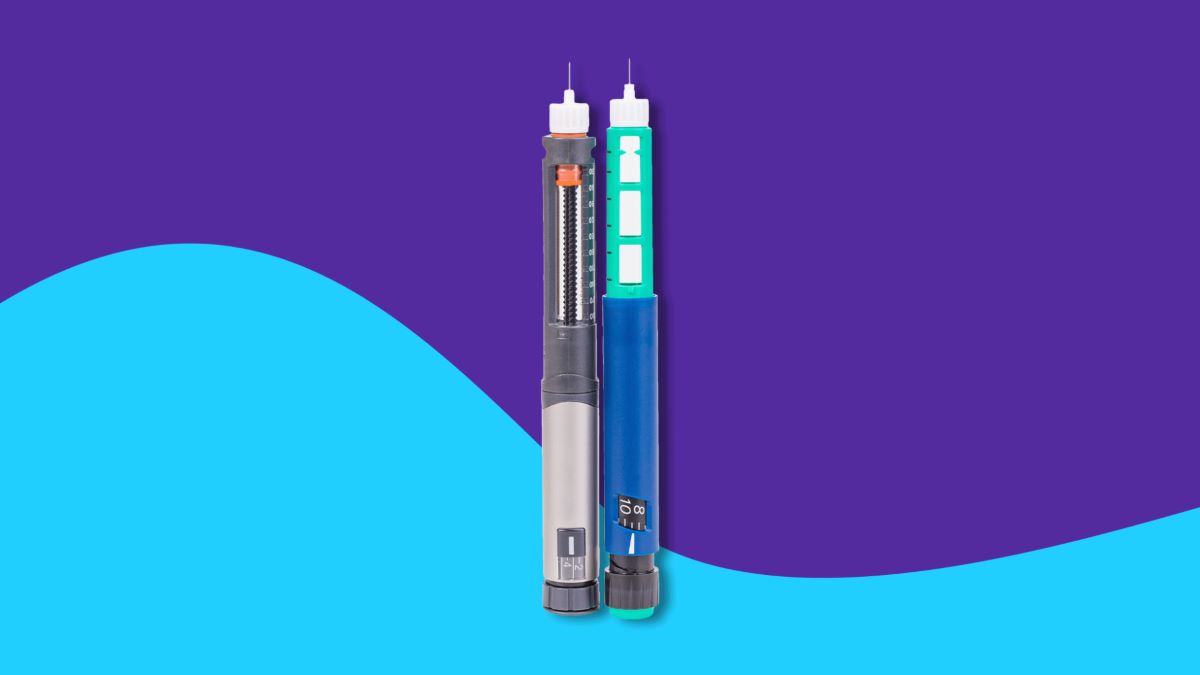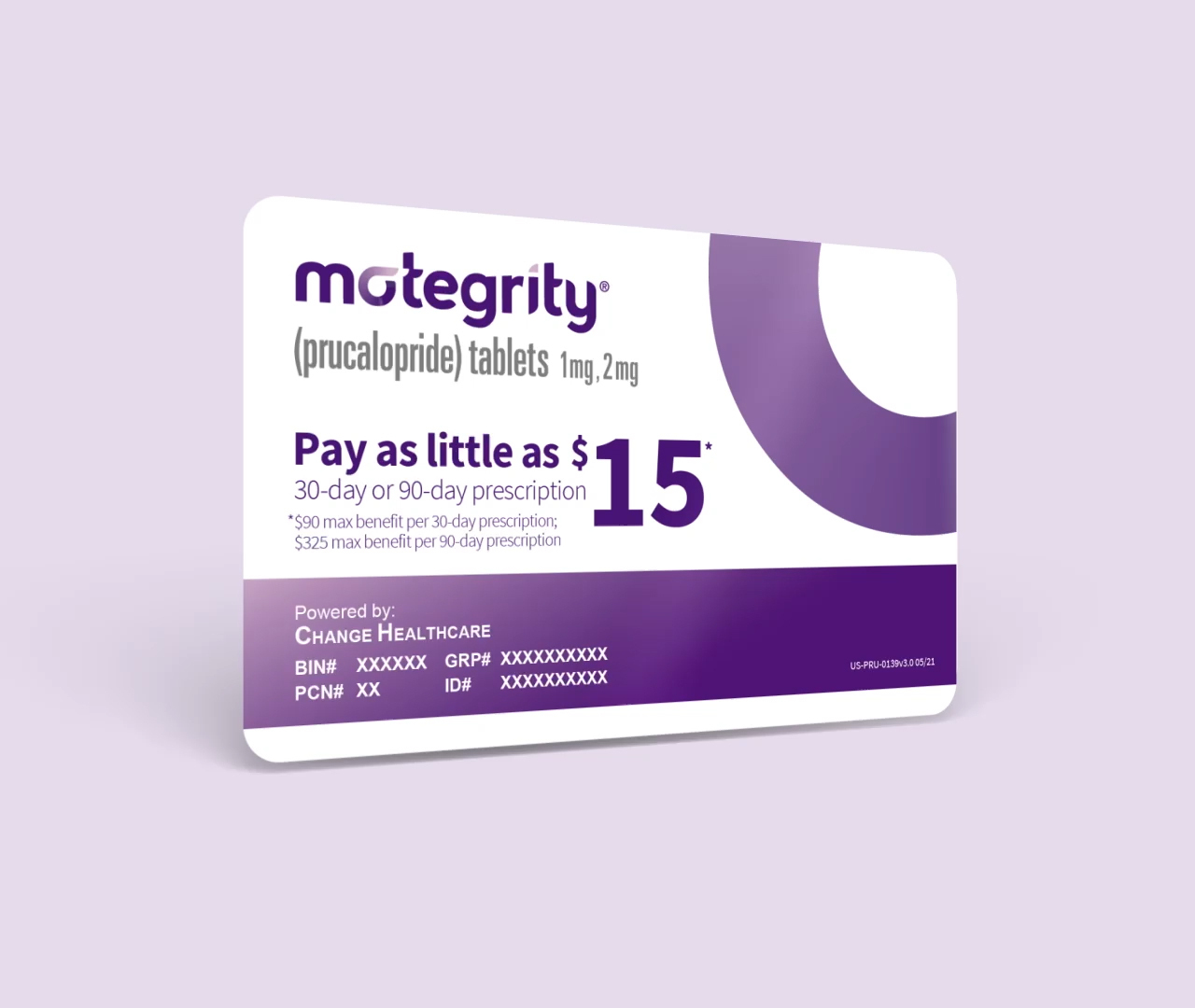

Finance
Why Is Dexilant Not Covered By Insurance
Published: November 24, 2023
Discover why Dexilant is not covered by insurance and the financial implications of this medication. Learn more about financing options for Dexilant.
(Many of the links in this article redirect to a specific reviewed product. Your purchase of these products through affiliate links helps to generate commission for LiveWell, at no extra cost. Learn more)
Table of Contents
Introduction
Welcome to our article on why Dexilant is not covered by insurance. If you or someone you know is prescribed Dexilant for acid reflux or gastroesophageal reflux disease (GERD), you may have noticed that it is not covered by most insurance plans. This can be quite frustrating and leave many wondering why such a commonly prescribed medication is not included in their coverage.
Dexilant is a prescription medication that belongs to a group of drugs known as proton pump inhibitors (PPIs). It works by reducing the amount of acid produced in the stomach, providing relief for individuals suffering from acid reflux symptoms.
Insurance coverage for prescription medications can be complex and varies from one plan to another. While some plans may cover Dexilant, many do not. Understanding the reasons behind this lack of coverage can provide insight into the insurance industry’s decision-making processes and help you explore alternative options.
In this article, we will explore why Dexilant may not be covered by insurance, discuss alternative medications for acid reflux, and provide guidance on how to navigate conversations with your insurance provider to potentially secure coverage for Dexilant.
Understanding Dexilant
Dexilant, also known by its generic name dexlansoprazole, is a medication commonly prescribed to treat gastroesophageal reflux disease (GERD) and other acid-related conditions. It belongs to a class of medications called proton pump inhibitors (PPIs), which work by reducing the production of stomach acid.
The active ingredient in Dexilant, dexlansoprazole, helps alleviate symptoms such as frequent heartburn, regurgitation, and difficulty swallowing that are often associated with GERD. By decreasing the production of stomach acid, Dexilant helps to heal and prevent damage to the esophagus caused by acid reflux.
Dexilant is available in two forms: immediate-release and delayed-release capsules. The immediate-release capsules are typically taken once a day before a meal, while the delayed-release capsules are designed to provide extended release of the medication and are taken without regard to meals.
It is important to note that Dexilant is a prescription medication and should only be taken under the guidance of a healthcare professional. Your doctor will determine the appropriate dosage and duration of treatment based on your individual condition and medical history.
While Dexilant has proven to be an effective treatment for many individuals with acid reflux, its high cost and lack of insurance coverage can pose significant challenges for those who need it. Understanding why Dexilant may not be covered by insurance can help guide the search for alternative treatment options and approaches to securing coverage.
Insurance Coverage for Prescription Medications
Insurance coverage for prescription medications can vary significantly depending on the specific insurance plan, formulary, and individual policy terms and conditions. While some insurance plans may provide comprehensive coverage for a wide range of medications, others may have more limited coverage, especially for brand-name drugs like Dexilant.
Insurance companies often base their coverage decisions on a variety of factors, including the medication’s cost-effectiveness, clinical efficacy, availability of generic alternatives, and therapeutic alternatives. They also consider the recommendations and guidelines provided by medical organizations and regulatory bodies.
In many cases, insurance plans have a list of approved medications called a formulary. This formulary categorizes medications into tiers, with Tier 1 typically including generic medications that are covered at the lowest cost, and Tier 3 or higher including brand-name medications that may have higher copayments or may not be covered at all.
Dexilant, being a brand-name medication, often falls into a higher tier or may not be listed on the formulary of many insurance plans. This means that individuals prescribed Dexilant may face significant out-of-pocket expenses or may need to explore alternative treatment options that are covered under their insurance plans.
It is important to review your insurance plan’s formulary and coverage policies to understand which medications are included and the associated costs. The formulary can usually be found on your insurer’s website or by contacting their customer service.
If Dexilant is not covered or is subject to high out-of-pocket costs under your insurance plan, there could still be options to explore. It’s essential to have a conversation with your healthcare provider to discuss alternatives that may be equally effective and covered by your insurance plan.
Additionally, it’s worth mentioning that insurance coverage policies can change over time. What may not be covered today may be covered in the future, so it is always a good idea to periodically review your insurance plan and stay updated on any changes in coverage policies.
Reasons Why Dexilant May Not Be Covered by Insurance
There are several reasons why Dexilant may not be covered by insurance plans, leaving many individuals to bear the full cost of medication or seek alternative treatment options. Understanding these reasons can help shed light on the insurance industry’s decision-making processes:
- Cost considerations: Dexilant is a brand-name medication, which typically carries a higher price tag compared to generic alternatives. Insurance companies often prioritize cost-effectiveness and may opt to cover more affordable generic versions of medications rather than brand-name drugs.
- Formulary restrictions: Insurance plans often have a formulary, which is a list of approved medications. Dexilant may not be included in the formulary of certain plans, meaning it may not be covered at all or may be placed in a higher cost-sharing tier.
- Lack of clinical necessity: Insurance companies assess the clinical necessity and efficacy of medications when making coverage decisions. If there are other equally effective alternatives available for treating acid reflux, insurers may choose to exclude Dexilant in favor of those options.
- Availability of generic alternatives: Generic versions of medications are often viewed as more cost-effective alternatives to brand-name drugs. If there are generic options available for treating acid reflux, insurers may prefer those over Dexilant.
- Off-label use: Insurance plans typically cover medications that are approved for specific indications by regulatory bodies such as the FDA. If Dexilant is being prescribed for an off-label use, which means it’s being used for a condition not approved by the FDA, insurance coverage may be denied.
- Plan exclusions: Some insurance plans have specific exclusions for certain medications or conditions. Dexilant may fall under such exclusions, making it ineligible for coverage.
It’s important to keep in mind that insurance coverage policies can vary significantly between different plans and providers. While Dexilant may not be covered by some insurance plans, there may be other plans or assistance programs that can provide coverage or lower the out-of-pocket cost.
If Dexilant is not covered by your insurance, it is recommended to have a conversation with your healthcare provider to explore alternative medications that are covered under your insurance plan. They may be able to prescribe a different proton pump inhibitor or suggest lifestyle modifications that can help manage your acid reflux symptoms.
Furthermore, it is worth noting that insurance coverage policies can change over time. What may not be covered now may be covered in the future, so it’s always advisable to stay informed and periodically review your insurance plan’s coverage policies.
Alternative Medications for Acid Reflux
If Dexilant is not covered by your insurance or is not a viable option for any other reason, there are alternative medications available that can effectively manage acid reflux symptoms. These medications belong to the same class of drugs known as proton pump inhibitors (PPIs) and work by reducing the production of stomach acid. Here are a few commonly prescribed alternatives:
- Omeprazole: Omeprazole is a generic PPI and is often available at a lower cost compared to brand-name medications. It is commonly prescribed for acid reflux and GERD. Like Dexilant, it reduces the production of stomach acid, providing relief from symptoms.
- Lansoprazole: Lansoprazole is another generic PPI that can be used as an alternative to Dexilant. It works in a similar manner by reducing stomach acid production and is available at a lower cost.
- Esomeprazole: Esomeprazole is a PPI that is available as both a brand-name and generic medication. It is quite similar to Dexilant in terms of effectiveness and is often prescribed for acid reflux as well as other gastrointestinal conditions.
- Pantoprazole: Pantoprazole is another PPI that is frequently used to manage acid reflux symptoms. It is available in both brand-name and generic forms and can be a cost-effective alternative to Dexilant.
- Antacids: While not as potent as PPIs, antacids are over-the-counter medications that can provide temporary relief from acid reflux symptoms. They work by neutralizing stomach acid and can be useful for milder cases or as adjunct therapy.
- H2 blockers: H2 blockers, such as ranitidine and famotidine, are another class of medications used for acid reflux. They work by reducing the production of stomach acid but are not as potent as PPIs. These medications are available both over-the-counter and by prescription.
It’s important to note that the effectiveness and suitable alternative may vary for each individual, so it’s essential to consult with your healthcare provider to determine the most appropriate alternative medication based on your specific condition and medical history. They can guide you in choosing the right medication and dosage to effectively manage your acid reflux symptoms.
In addition to medication, lifestyle modifications can also play a crucial role in managing and reducing acid reflux symptoms. These can include avoiding trigger foods, maintaining a healthy weight, eating smaller meals, avoiding lying down immediately after meals, and raising the head of the bed while sleeping.
Remember, it’s important to have open and honest discussions with your healthcare provider to explore alternative medications and strategies to effectively manage your acid reflux symptoms.
Discussing Dexilant Coverage with Your Insurance Provider
If you find that Dexilant is not covered by your insurance plan, it is worth having a discussion with your insurance provider to understand the reasons behind the decision and explore potential options for coverage. Here are some steps you can take when discussing Dexilant coverage:
- Contact your insurance provider: Start by reaching out to your insurance provider’s customer service department. Be prepared to provide your policy details and any relevant documentation, such as your prescription and medical records.
- Ask for an explanation: Request an explanation of why Dexilant is not covered under your plan. Ask if there are any alternative medications that may be covered or if there are specific criteria that need to be met for coverage.
- Provide supporting information: If there is evidence or documentation from your healthcare provider supporting the necessity of Dexilant for your specific condition, share it with the insurance provider. This can help strengthen your case for coverage.
- Inquire about the appeals process: If the insurance provider denies coverage for Dexilant, ask about the appeals process. They may have an appeals process in which you can provide additional information or documentation to support your request for coverage.
- Explore patient assistance programs: Some pharmaceutical companies offer patient assistance programs for individuals who cannot afford their medications. These programs can help you access Dexilant at a reduced cost or even for free. Inquire about any such programs that may be available.
- Consult with your healthcare provider: Discuss your concerns and the insurance provider’s response with your healthcare provider. They may be able to provide additional guidance or support, including writing a letter of medical necessity or exploring alternative treatment options.
Remember to document all communication with your insurance provider, noting dates, times, and the names of the representatives you speak with. This can be valuable information if you need to escalate the issue or file a formal complaint in the future.
While there is no guarantee of success, advocating for yourself and having open and honest conversations with your insurer can increase the chances of securing coverage for Dexilant or finding alternative solutions to manage your acid reflux symptoms.
Lastly, it is important to periodically review your insurance plan and stay informed about any changes in coverage policies. What may not be covered now could change in the future, so it’s always a good idea to stay updated and explore coverage options at different times.
Appeals and Assistance Programs for Dexilant Coverage
If your insurance provider denies coverage for Dexilant or if the cost is prohibitive, there are options available to help you navigate these challenges. Here are two potential avenues to explore:
1. Appeals: If your insurance provider denies coverage for Dexilant, you have the right to appeal their decision. The appeals process allows you to present additional information, such as medical records or letters of medical necessity from your healthcare provider, to support your case for coverage.
When submitting an appeal, it is crucial to provide clear and compelling evidence that Dexilant is medically necessary for your condition and that there are no suitable alternatives covered by your insurance plan. Be diligent in following any specific guidelines or forms provided by your insurance provider, and keep copies of all documents for your records.
2. Assistance Programs: PharmaceYouTube cetical companies often have patient assistance programs to help individuals who cannot afford their medications. These programs are designed to provide discounted or even free medication to eligible individuals.
Research whether the manufacturer of Dexilant has a patient assistance program in place. These programs typically have specific criteria for eligibility, such as income levels or lack of prescription drug coverage. If you meet the criteria, you may be able to access Dexilant at a reduced cost or for free through these programs.
It is important to note that each assistance program may have its own set of requirements, application processes, and restrictions. Research and gather all the necessary information and documentation, and reach out to the program for guidance on how to apply.
Additionally, some nonprofit organizations and foundations offer prescription assistance programs that may help cover the cost of Dexilant or provide financial aid for individuals who cannot afford their medications. These organizations can be valuable resources in your search for financial assistance.
Remember to explore all available options and thoroughly research the eligibility requirements, application procedures, and any associated costs or fees for each program.
Overall, navigating insurance coverage for Dexilant can be challenging, but it’s essential to remain persistent and explore all avenues available to you. Appeals and assistance programs can provide an opportunity to access the medication you need at a more affordable cost.
Consulting with your healthcare provider and reaching out to advocacy organizations and patient support groups can also provide valuable guidance and resources during this process.
Conclusion
While dealing with insurance coverage for Dexilant can be frustrating, it’s important to understand the reasons behind its limited coverage and seek alternatives to manage acid reflux symptoms. Dexilant, being a brand-name medication, is often not included in insurance formularies or may be subject to higher cost-sharing tiers.
However, there are several steps you can take to navigate this situation. Start by discussing Dexilant coverage with your insurance provider and inquire about the appeals process if coverage is denied. Be prepared to provide supporting documentation, such as letters of medical necessity from your healthcare provider, to strengthen your case for coverage.
Additionally, explore assistance programs offered by the manufacturer of Dexilant or other organizations that provide financial aid for prescription medications. These programs can help reduce or eliminate the out-of-pocket cost of Dexilant, making it more accessible for those who need it.
Moreover, consider alternative medications for acid reflux that are covered by your insurance plan, such as generic PPIs or other options like antacids and H2 blockers. Discuss these alternatives with your healthcare provider to find the most suitable option for your specific condition.
Remember, insurance coverage policies can change over time, so it’s important to periodically review your insurance plan and stay informed about any updates or changes in coverage policies that may impact the availability of Dexilant or other medications.
Overall, while the lack of insurance coverage for Dexilant can pose challenges, there are potential paths to explore. By advocating for yourself, seeking assistance programs, and exploring alternative medications, you can effectively manage your acid reflux symptoms and work towards finding the most suitable treatment option within the confines of your insurance coverage.
Always work closely with your healthcare provider to ensure you are receiving the necessary care and treatment for your condition, and don’t hesitate to reach out to patient advocacy organizations or support groups for additional guidance and resources.














